Tess Maunder – 25 December, 2011
'City Within the City' contextualizes the ethos of a city as a fluid and intersecting cluster of interweaving and ever-evolving urban and human networks. As initiated by the public program activities, the exhibition broadly draws on hopeful re-consideration of relationships both within the city and between other cities and nations.
Seoul
Abraham Cruzvillegas, Nayla Dabaji and Ziad Bitar, Alicia Frankovich, Emil Goh, Jinyeoul Jung and Changmo Ahn, Yeondoo Jung, Ash Keating, Kim Beom, Jooyoung Le, Minouk Lim, Listen to the City, Andrew McQualter, Hyunsuk Seo, Haegue Yang, Jun Yang, Suyeon Yun and Jinyoung Koh
City Within the City
November 12, 2011 - January 15, 2012
City Within the City is a two-part exhibition presented in Seoul, South Korea, and Melbourne, Australia; two expanding metropolises within the Asia-Pacific region.
It is unavoidable to review this exhibition and not make comment on recent news of North Korean leader Kim John-Il’s death. The fate of his regime is now awaiting a new leader. This change in power has provoked concerns regarding the unpredictable nature of the North Korean government and it’s affects on the previously stable relationship below the Peninsula, with South Korea. People are optimistic that the changes in government won’t have an adverse effect on the peace and stability of the Korean Peninsula. In Europe, moreover, government officials in Britain and Germany are hopeful that the transition could offer North Korea an opportunity to enhance the lives of its impoverished people. This offers the opportunity to then emerge from isolation by working to resolve the international stalemate over its nuclear arsenal.
The first component of City Within the City is currently presented at the Artsonje Center in Seoul, making the exhibition concurrent with the aforementioned leadership changes. The exhibition opened before the North Korean leaders passing, however remains open until the 15th of January, compelling audiences to engage with the exhibition under the new political paradigm. The hopefulness employed by European officials was also shared, albeit unbeknownst, by the public program component of City Within the City; called Listen to the City Writing and Drawing Workshop North Korea: imagined by South Korea. This activity offered peaceful reconciliation through audience engagement with the physical comparison between the two Koreas. This political tone is continued throughout the rest of the exhibition, the artists inquire into the conceptual construct of a city; questioning the metropolis as a site of historical, geographical, and administratively determined actions that occur between built environments and human subjectivities. The exhibition explores our role within cities as participants, observers and even obstacles of urban development.
Part one of City Within the City specifically focuses on the context of urban Seoul. Korea is often defined historically by its overbearing political and urbanized structure; however, it has recently emerged, as a global presence due it’s its prolific economic and industrial growth. The artists in the exhibition question the consequences of Seoul’s formal city development, the works in the exhibition re-imagine and comment on the urban decisions. The exhibition portrays how human subjectivity exists within this climate, and can still produce possibilities for resistance, creativity and transgression. Through this process, the exhibition becomes a site for the widening of engagement with the city’s ethos.
Works in the exhibition provide the opportunity for viewers to reconsider urban spaces as sites of creative engagement. Mexican artist Abraham Cruzvillega explores ‘survival economics’, which the artist describes as the constructive opportunity available in found materials. In this exhibition he presents the ongoing project Autoconstrucción (resources room) 2010. The work is comprised of objects collected over years by the artist, derived from his immediate urban environment. As the title eludes, Cruzvillega has constructed the installation through a ‘self-building’ process. The term is derived from his childhood experience of eclectic architecture growing up in a derelict and impoverished district in Southern Mexico City where often houses were constructed from pieces of landfill waste and urban debris. In the exhibition Cruzvillega’s work operates as an example for both individual identity and the identity of a site existing in a state of flux.
New Zealand-born Alicia Frankovich explores the limitations of movement with Choreography 1, 2011. The human-size plank of wood is suspended so that a kinetic system sporadically spins the object in random disrupted spirals. Frankovich’s kinetic work functions as a type of representation of a sustained performed body. This object is displayed adjacent to a single channel video projection, (Volution, 2011) which documents a constructed situation that the artist has choreographed. The scenario transcribes as a quasi-boxing match, which evolves into a morphed dance, as the participants swing, back-step, fall and turn in stomach-churning multiple rotations. These works together inquire into the durational and sustained performative body in dialogue with its urban environment, thus re-exploring the body and the urban landscape as sites for creative engagement.
Negotiations between individuals and the cityscape are explored through both first-person recollections and ‘officially recognized’ historical references. Minouk Lim‘s three-channel video presents a series of idiosyncratic riverside encounters during a Han River night cruise. The three-channel video installation S.O.S. Adoptive Dissensus, (2009) engages the audience with a dialogue between the river and the city. In Southern Rainbow Seoul, (2011) Yeondoo Jung investigates how Korean families subvert the dehumanizing effects of residential architecture through an encyclopedic photo series of living rooms. In his short film Seoul Fiction (2010), Jun Yang exposes an emotional, surreal, and highly personal conflict between city and countryside as experienced by an elderly Korean couple. Haegue Yang juxtaposes a utopian apartment-tower with the banality of newsprint in her slide projection Dehors (2006).
City Within the City contextualizes the ethos of a city as a fluid and intersecting cluster of interweaving and ever-evolving urban and human networks. What seem to have emerged are relationships in clusters, characterized by moments of encounter rather than strictly imposed rhetoric or objectives. As initiated by the public program activities, the exhibition broadly draws on hopeful re-consideration of relationships both within the city and between other cities and nations. One could hope that this optimism carries through to the current political climate and offers a promising future for Korea.
Visitors can attend the first part of this exhibition series through to January 15th at the Artsonje Center in Seoul, South Korea. The second component of the exhibition will be on display at Gertrude Contemporary in Melbourne, Australia from 5 October to 10 November 2012.
*Information was correct at time of publishing.
Tess Maunder
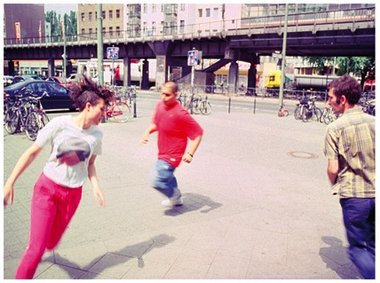


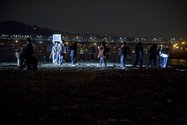
 Advertising in this column
Advertising in this column Two Rooms presents a program of residencies and projects
Two Rooms presents a program of residencies and projects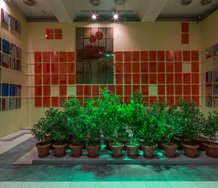
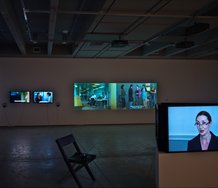
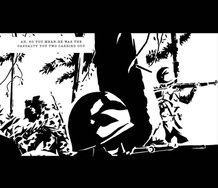
This Discussion has 0 comments.
Comment
Participate
Register to Participate.
Sign in
Sign in to an existing account.